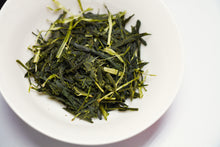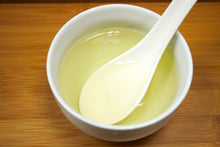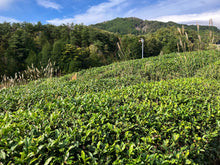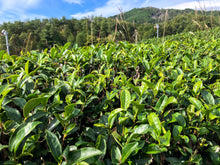Dosenbo (童仙房) is a high-altitude tea-producing region located in Minamiyamashiro Village, Kyoto Prefecture. Among the Uji tea-producing areas, it belongs to the high-altitude regions, with tea fields spreading at an elevation of approximately 500–600 meters. This area is known for frequent fog and significant temperature differences between day and night, allowing tea to grow slowly. As a result, it develops a high concentration of polyphenols and aromatic compounds, producing tea with a well-defined flavor and aroma.
A Renowned Tea Region Adjacent to Iga and Tsukigase
Although geographically part of Kyoto Prefecture, Dosenbo is located next to Tsukigase in Nara City, Nara Prefecture, and Iga in Mie Prefecture, famous as the land of ninjas. There are various legends about the origin of the name Dosenbo. Some theories suggest that monks and ascetics once practiced here, while others claim that defeated warriors sought refuge in this area. However, concrete historical evidence is scarce, and these accounts are mostly passed down as folklore.
Tea Gardens with Abundant Sunlight Yielding Fragrant Teas
Dosenbo enjoys excellent sunlight, which contributes to the production of tea rich in aromatic compounds. Dosenbo Zairai Sencha is made from naturally grown seed-propagated (Zairai-shu) tea cultivated without fertilizers or pesticides. These tea gardens were converted to organic cultivation relatively recently, producing sencha characterized by floral aromas. With each passing year, the clarity of flavor continues to improve, making the future evolution of these tea gardens exciting to observe.
Umami Does Not Equate to Deliciousness
Modern Japanese tea trends favor teas with high umami content. The primary component of umami is an amino acid called theanine. However, umami itself does not mean deliciousness.
Umami refers to flavors represented by glutamic acid sodium, the core component of dashi stock. Due to the term "umami" being a Japanese word, it is often misunderstood that a higher umami content makes tea more delicious.
To increase the amino acid content in tea leaves, nitrogen fertilizer must be applied.
Tea plants in fertilized gardens grow vigorously, but at the same time, they contain lower amounts of polyphenols and minerals, including catechins. Additionally, teas rich in theanine tend to have a weaker depth of flavor (aftertaste), resulting in a lighter taste profile.
HOJO’s Japanese Teas Are Defined by Their Strong Aftertaste
At HOJO, we prioritize selecting teas with a rich aftertaste rather than focusing on theanine content. We choose teas that are abundant in catechins and minerals. Teas with high mineral content are often cultivated through natural farming, using little to no fertilizer.
Enjoy the lingering sweetness that remains in your throat after drinking our tea.
To preserve the fresh aroma of raw tea, we remove only impurities and package the tea immediately in oxygen-free packaging without roasting.








